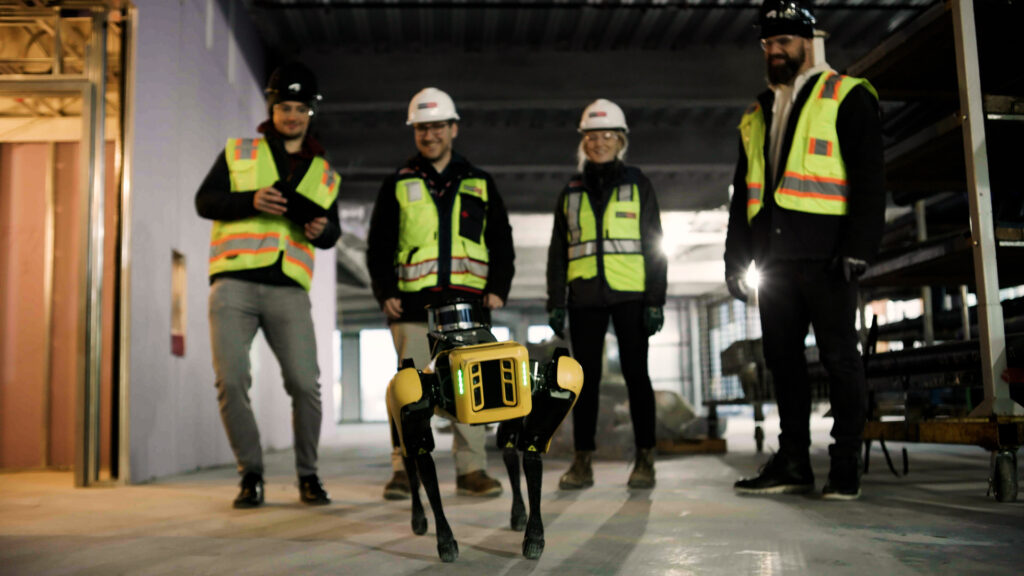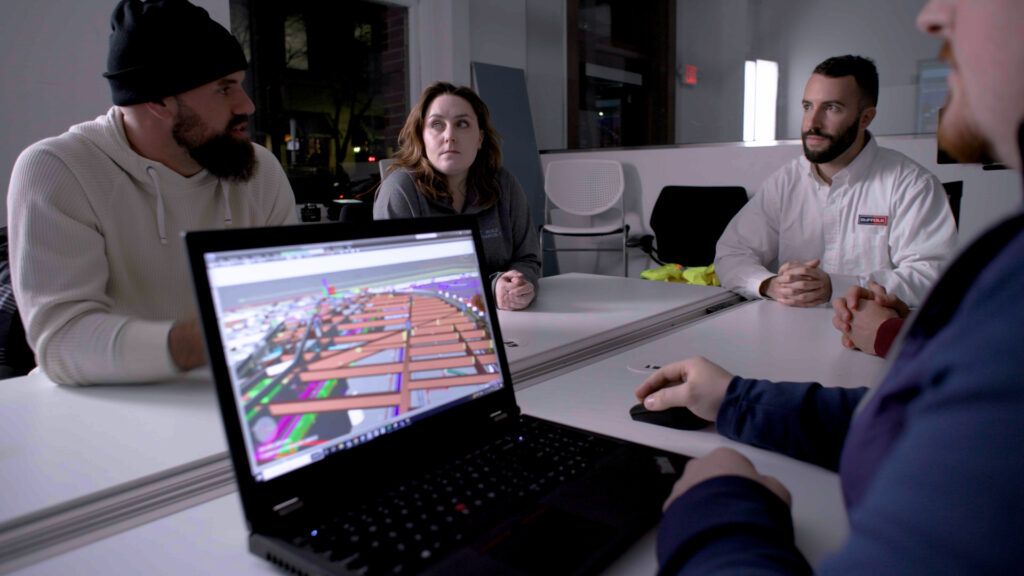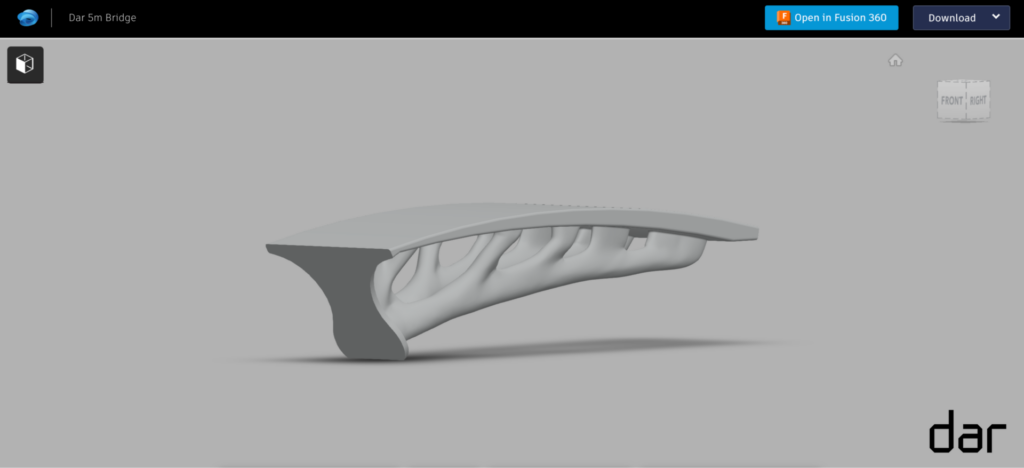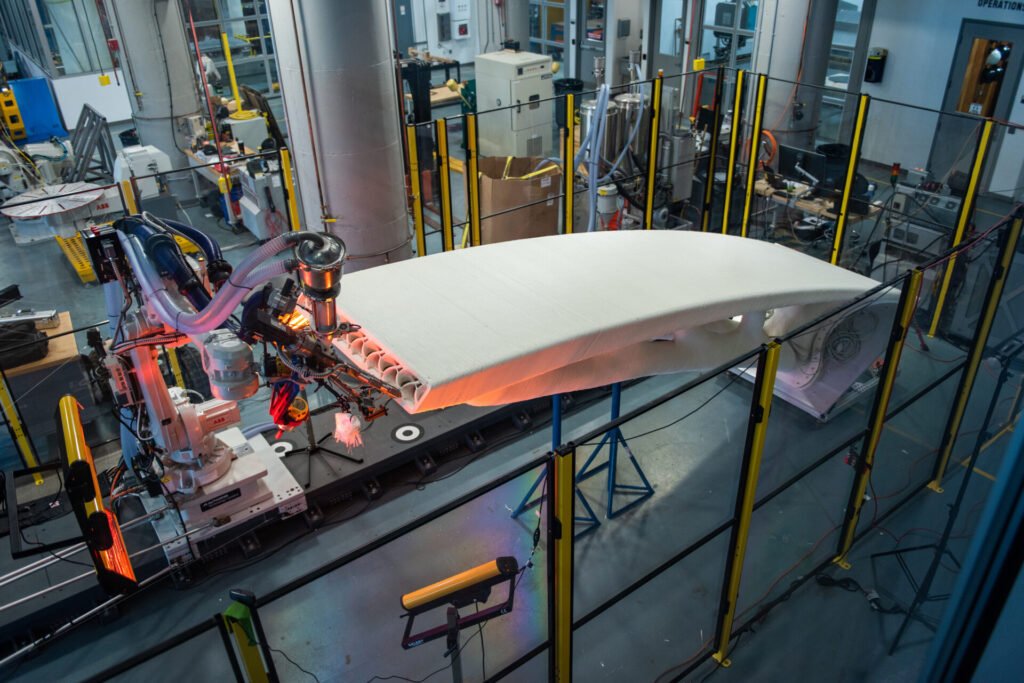
Vibrant communities are walkable communities. Having convenient, walkable access to local amenities connects pedestrians to businesses, activities, and each other, making for a healthy lifestyle. Blockages to pedestrian access are problems, however, they are also opportunities for designers to solve them through innovation.
With its latest annual Make It Real scholarship design contest, Autodesk challenges high school students to connect physical divides in their communities by imagining how they could improve pedestrian infrastructure. Their new design should include a pedestrian bridge that addresses a real gap in the student’s community and should establish a new connection between, for example, old and new spaces, urban and natural environments, the indoors and outdoors, and so on. The bridge could be part of a larger design that includes shelter-providing structures, landscaping, or whatever else the designer can imagine.
For the 2023 Make It Bridge contest, entrants must be aged 13-21, currently in high school (or homeschooled) in the US or Canada, and must incorporate Autodesk software to create an Instructable for their bridge design. Winners have an opportunity to earn scholarship funds totaling $50,000, which can be used to support the winner’s education and cover other related needs, such as tuition, books, room & board, transportation, and childcare. In addition, there will be another $50,000 awarded in $500 microgrants* to help young people ages 17-22 to transition into the building trades after high school. In 2022, the Make It Real program empowered 84 young people on the path to construction-related careers, of which 57% planned to enter building trades directly from high school.
Star Support for Student Design
This year, Autodesk welcomes back former NFL fullback James Develin, a three-time Super Bowl winner with the New England Patriots. He graduated from Brown University with a mechanical engineering degree, and for the last four years he has joined the Make It Real program by hosting webinars, video series, and design challenges that immersed students in the possibilities of the architecture, engineering, and construction fields.

“I’m so glad to partner once again with Autodesk to increase awareness of the incredible roles in construction, and to highlight the opportunities throughout all stages of the building process, from the initial idea for a project, up until the final nail is driven,” Develin says.
This year, Develin has also teamed up with fellow athlete/scholar Connor Clifton, a defender for the Boston Bruins NHL hockey team who studied engineering at Quinnipiac University. The two appear together on an active construction site in a web series focused on the possibilities for the next generation of builders. “Obviously education plays a big role,” Clifton says, “but the experience of boots on the ground is something entirely different.”
The Path to Success
Before diving into the Make It Bridge contest challenge, Autodesk encourages students to begin by identifying the place where a pedestrian bridge would benefit their local area. They then should consider the experience of seeing and using the bridge. How might the bridge look from different perspectives? Will it stand out as a showcase piece, or will it cleverly blend into its surroundings? How will it feel to walk across the bridge? In this era of the Internet of Things, students may also consider whether the bridge can incorporate sensors and other technology to gather data or harness energy as people walk across it.
If looking for some inspiration, students can use this starter model of a five-meter, cantilevered Smart Bridge that Dar and Autodesk Research partnered on using generative design and 3D printing. The contest design should incorporate Autodesk software, which educators and students can access.

Other things to consider include the bridge’s purpose. It should serve to increase accessibility, bring different people together, connect people with nature, and/or strengthen civic and social infrastructure.
Two $10,000 grand prizes will be awarded for 1) the best use of CAD (Computer Aided Design) or BIM (Building Information Modeling) tools and 2) the best physical prototype, which can be a scale model of the design or a physical mockup of a design component. In either case, entries will be judged on real-world relevance, presentation, engineering mindset, and 3D digital literacy and design.

Whether high schoolers are planning to enter building trades directly or proceed to college programs, developing their practical and conceptual design and engineering skills through challenges like the Make It Bridge contest will help prepare them for their future of building a better world. The Make It Real program demonstrates how important construction and the built environment are to societal progress. That’s why athletes like Develin and Clifton see them as a bridge from their sporting lives to a new career and want to help students do the same.
“I have a great amount of respect for the construction workforce that builds the world around us,” Develin says. “And I’m so excited to bridge the gap to the next generation of brilliantly talented builders, innovators, and thinkers!”
Learn more about the Make It Real program and enter the 2023 Make It Bridge contest.
*The microgrants will be provided through the Building Changemakers Giveaway.